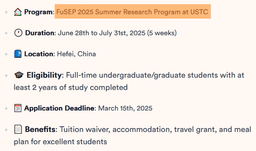How to Deal With Scholarship Rejection (Real Advice From Experience)
Got rejected from a scholarship? You’re not alone. Learn how to handle scholarship rejection, rebuild your confidence, and improve your next application with practical, experience-based tips.


You spent hours crafting essays, filling forms, and dreaming about the moment you would see “Congratulations!” in your inbox, but instead, it read “We regret to inform you…”
If you have ever faced a scholarship rejection, you are not alone. Even top students with strong grades and recommendations get turned down.
I have been there too. As a first-class graduate and best student in engineering, I thought getting scholarships would be easy. But that is not how it works.
Rejection hurts, but it is not the end of the story. In fact, it is often the beginning of a stronger one.
Here is how to deal with scholarship rejection in a healthy, smart, and growth-focused way.
1. Acknowledge Your Feelings
The first step is simple but powerful: let yourself feel.
You may feel disappointed, frustrated, or even question your worth. That is okay. Take a few days to process it.
Remember:
Rejection is not a reflection of your value or potential. It simply means there were limited slots and high competition.
If a scholarship accepts only 20 students out of 5,000 qualified applicants, then even amazing candidates will be left out. That is not failure; it is probability.
2. Reframe It as a Learning Opportunity
You did not fail; you just received feedback in disguise.
Scholarship rejections can teach you a lot if you look closely:
- Did you tailor your essay to match the scholarship’s goals?
- Were your experiences or goals clearly aligned with their mission?
- Did you meet every requirement, even optional ones like IELTS, passport, or proof of leadership?
Every “no” is data. It tells you what to adjust for the next round.
3. Review and Strengthen Your Application
Once the emotions settle, move into improvement mode.
✅ Seek Feedback: If possible, ask the scholarship committee or a mentor for feedback. Even a short response like “we prioritized research-based applicants this year” can help refine your focus.
✅ Review Your Essays: Compare your essays with the scholarship’s theme. Did you show leadership, impact, and clear goals? Avoid using the same generic essay for all applications.
✅ Enhance Your Profile:
- Take free or affordable online courses on Coursera, edX, or FutureLearn.
- Volunteer or start small projects. Real impact does not have to be huge.
- Add IELTS or TOEFL results to your profile, even when optional. It shows readiness and gives you an edge.
✅ Polish Your Documents: Update your CV, transcript, and recommendation letters to look professional.
4. Apply for More Scholarships (and the Right Ones)
Do not let one rejection stop you. Most scholarship winners faced several rejections before their big “yes.”
Apply strategically:
- Look for less competitive or regional scholarships.
- Focus on programs that truly fit your background and goals.
- Keep a spreadsheet of scholarships, deadlines, and requirements.
Persistence matters more than perfection. Every new application is a refined version of the last.
5. Find Support and Stay Connected
Talk to people who understand what you are going through, such as mentors, family, or friends who have faced similar challenges.
Join scholarship or study-abroad communities on LinkedIn, Telegram, or Facebook. These groups offer practical tips, motivation, and resources.
Hearing others’ stories reminds you that rejection is not personal. It is part of the process.
6. Protect Your Mindset
Scholarship rejections can be mentally exhausting, so protect your energy and focus.
- Take short breaks from applying if needed.
- Celebrate small wins like finishing an essay or submitting before a deadline.
- Avoid comparing yourself to others online. Everyone’s timing and journey are different.
Remember:
Every rejection is not a dead end. It is a redirection toward the opportunity that fits you better.
7. My Personal Lesson
I will be honest — I have also faced scholarship rejections, and I am still applying.
Even with strong grades and achievements, it is not always easy. But I have learned that rejection is part of the journey, not the end of it.
Each time I get a “no,” I take it as a reminder to improve something — maybe my essay, my documents, or my mindset. I have also realized that success in scholarships is not just about how good you are, but also about timing, fit, and persistence.
So while I have not yet received that “Congratulations” email, I remain hopeful.
Because every rejection brings me one step closer to the opportunity that will eventually align perfectly with my story and goals.
Rejection does not mean it will never happen. It just means not yet.
Wrap Up
Scholarship rejection does not define your worth. Your response to it does.
Acknowledge the pain, learn from it, improve your application, and keep applying. Each rejection brings you closer to the opportunity that truly fits you.
When you finally get that “Congratulations” email, you will look back and realize:
The journey, including the rejections, prepared you for it.




